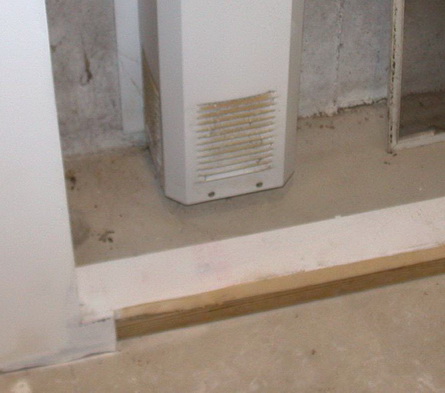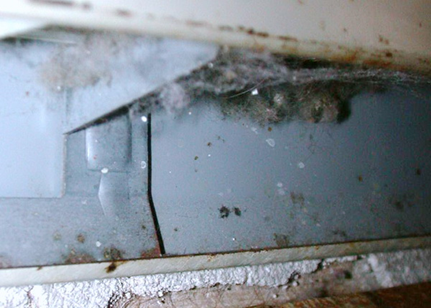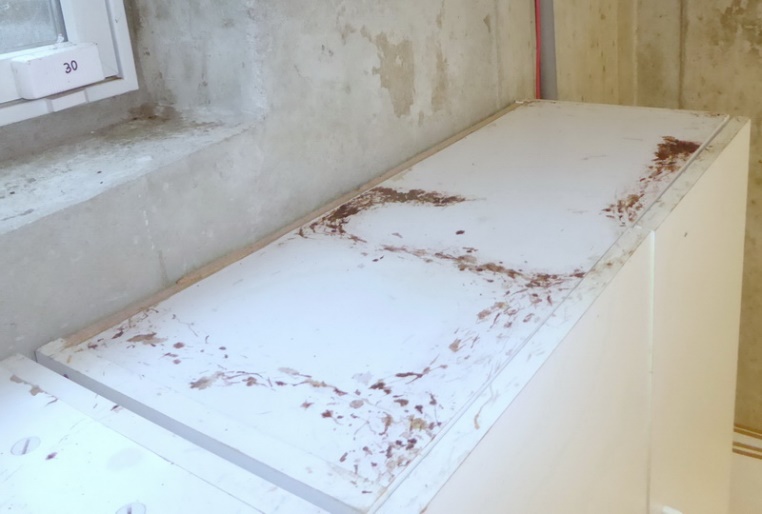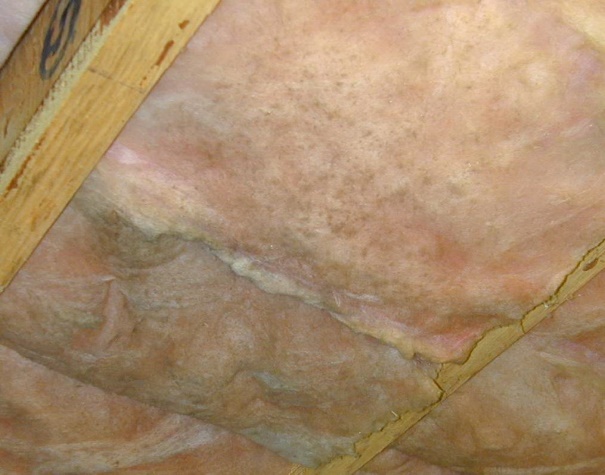IAQ IQ, Winter 2024-2025
©2025 Jeffrey C. May
Most of you know that I used to be a home inspector, which gave me invaluable experience for investigating indoor air quality (IAQ) problems. There is a lot of overlap between the issues I consider as an IAQ professional and the issues that a home inspector would consider. In this newsletter, I am going to discuss some of these issues.
Mechanical Systems
During the construction of a new home or the renovation of an older home, was the HVAC system running? Unless the answer is a resounding “no,” the entire system could be full of biodegradable sawdust and other debris. As a home inspector, you could recommend that such a system be inspected and cleaned as needed, preferably before a buyer moves into the property.
Mini-splits have inadequate filtration and thus become moldy, as evidenced by black spots on the supply louvers and in the gray dust on blower blades (turn the unit off first to stop the blower from rotating and then use your flashlight to look inside). A mini-split should be inspected annually and cleaned as needed.
An air handler should be easily accessible for filter-changing, cleaning, and other maintenance needs.
UV lights are not very effective in residential units, because the air flows too quickly by the lights to be disinfected.
I dislike exhaust-only, basement “dehumidifiers” for several reasons. First, if a basement is leaky, the fan will draw in air from the exterior. If that air contains moisture, condensation and mold growth can occur on cool basement surfaces.

Second, if the basement is airtight, the fan will decrease the air pressure in the basement, drawing house air down into the basement. If that air is moist, again condensation can occur, and heating and cooling costs for rooms above-grade can increase.
Baseboard heating convectors and radiators can contain allergenic dust and should be thoroughly cleaned prior to occupancy.

Below-Grade Spaces
A dirt crawlspace or basement can have a deleterious effect on occupants’ health, because evaporating moisture fuels mold growth on cool surfaces, and because the soil itself can contain allergens from microorganisms growing in the soil. (Microarthropods can forage on the microorganisms, and microarthropods including mites produce allergenic fecal matter.)
Exposed fiberglass insulation is an invitation for mice to move in.

A correlation has been drawn between elevated levels of mouse-urine allergens indoors and increased asthma symptoms.

Raised floors in finished basements can hide all sorts of ills, including pest infestations, moisture intrusion, and mold growth.
Off-gassing
Finishes in newly renovated or constructed homes can off-gas chemicals that can make some occupants sick. Such homes should be thoroughly ventilated by using supply and return box fans, as well as oscillating fans to reduce the “boundary layer” of air on surfaces that slows down evaporation.
The photographs in this article are the property of May Indoor Air Investigations LLC and can be used with permission.
BOX OF NEWS
An interview with Jeff May and interviews with over 30 other professions are included in the virtual summit “GOT MOLD?” that will launch February 20-23, 2025. For more information, goes to: https://360summits.com/got-mold-summit/.
Connie May’s book A Parade of Drunks (a memoir of her childhood) will be published this February or March by the Onion River Press in Vermont and will be available on line.
